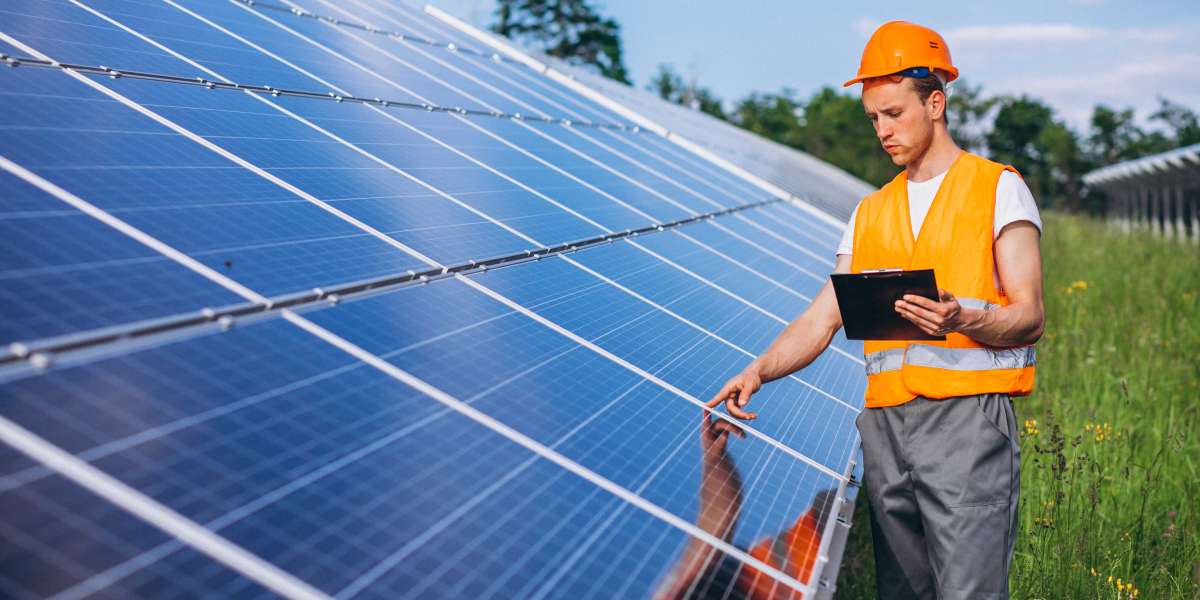As Pakistan faces increasing energy demands and fluctuating power supply, solar energy has emerged as a viable solution. This guide provides a comprehensive overview of the solar system installation process in Pakistan, covering everything from initial considerations to post-installation maintenance. By understanding each step, you can ensure a successful solar system installation in Pakistan that maximizes efficiency and benefits.
1. Initial Considerations for Solar System Installation
Assessing Energy Needs
The first step in solar system installation in Pakistan is to assess your energy needs. This involves reviewing your current electricity usage, identifying the key appliances that need to be powered, and calculating the total energy consumption. An accurate assessment helps determine the size and type of solar system required, ensuring that your energy demands are met efficiently.
Evaluating Site Conditions
Site evaluation is crucial for a successful solar system installation in Pakistan. Examine the roof or installation area to determine the optimal placement of solar panels. Key factors include:
- Roof Orientation: South-facing roofs typically receive the most sunlight throughout the day.
- Tilt Angle: The angle at which panels are installed should optimize sunlight exposure, usually between 25-30 degrees.
- Shading: Ensure there are no obstructions like trees or buildings that could cast shadows on the panels, reducing their efficiency.
Ensuring unobstructed sunlight exposure will enhance the efficiency of the solar system and maximize energy production.
Budget Planning
Establishing a budget is essential for solar system installation in Pakistan. Costs vary based on system size, panel type, and installation complexity. A clear budget that accounts for both initial setup and ongoing maintenance will help you select the most cost-effective solution and avoid unforeseen expenses.
2. Choosing the Right Solar Panels
Types of Solar Panels
Selecting the right type of solar panel is a critical decision in solar system installation. There are three main types:
Monocrystalline Panels: Known for their high efficiency and sleek appearance, these panels are made from a single crystal structure. They are ideal for limited spaces due to their higher energy output but tend to be more expensive.
Polycrystalline Panels: Made from multiple crystal structures, these panels offer a balance between cost and efficiency. They are slightly less efficient than monocrystalline panels but are more affordable.
Thin-Film Panels: These panels are made by depositing photovoltaic material onto a substrate. They are less efficient but can be more flexible and lighter, making them suitable for specific applications or large-scale installations.
Panel Efficiency
Panel efficiency refers to how much sunlight a solar panel can convert into usable electricity. Higher efficiency panels, such as monocrystalline panels, may cost more but offer greater energy output, especially beneficial in areas with limited installation space. Efficiency should be considered based on the available space and your specific energy requirements.
Brand and Quality
Choosing reputable brands ensures high-quality panels that offer better performance and longer warranties. Established brands often provide more reliable products and customer support, which is crucial for long-term satisfaction and return on investment.
3. System Design and Proposal
Designing the Solar System
The next step is designing the solar system. This involves determining:
- Number of Panels: Based on your energy needs and site conditions.
- Inverter Type: The inverter converts DC from the panels to AC for home use.
- System Layout: Ensuring optimal panel placement for maximum sunlight exposure.
A well-designed system maximizes energy production and ensures that the solar setup fits the available space.
Obtaining a Proposal
Once the system design is complete, the solar provider will prepare a detailed proposal. This includes:
- Cost Breakdown: Detailed costs for equipment, installation, and any additional services.
- System Specifications: Information on the types of panels, inverters, and expected energy output.
- Return on Investment (ROI): Estimates of savings over time compared to current electricity costs.
- Installation Timeline: A clear schedule for when the work will be completed.
This proposal helps in understanding the financial and logistical aspects of the installation.
4. Permitting and Approvals
Regulatory Requirements
Solar system installation in Pakistan requires various permits and approvals. These may include:
- Local Authority Permissions: Compliance with building and safety codes.
- Environmental Agency Approvals: Ensuring the installation adheres to environmental regulations.
Obtaining these permits ensures that the installation meets all legal requirements and prevents any delays or legal issues.
Grid Connection Approval
For grid-tied solar systems, approval from the local electricity utility is necessary. This process involves:
- Technical Review: Ensuring that the system can be safely connected to the national grid.
- Installation of Bi-Directional Meter: To measure energy production and consumption, which allows for net metering.
Grid connection approval is essential for systems that aim to feed excess electricity back into the grid, enabling savings on electricity bills.
5. Procurement of Materials
Selecting Components
The procurement process involves selecting high-quality components for the solar system, including:
- Solar Panels: Choosing the type and number of panels based on efficiency and space.
- Inverters: Selecting an inverter that matches the system’s energy output and needs.
- Mounting Structures: Ensuring the structure can securely hold the panels and withstand local weather conditions.
- Wiring: Proper wiring is crucial for safety and efficiency.
Choosing durable and reliable components ensures the system’s longevity and performance.
Vendor Selection
Selecting reputable vendors for purchasing solar equipment is crucial. Trusted suppliers often offer products with better warranties and support services. Comparing prices and quality across different vendors can help you find the best deal for solar system installation in Pakistan.
6. Installation Process
Mounting Solar Panels
The installation process begins with mounting the solar panels on the roof or designated area. This step involves:
- Securing Mounting Structures: These structures hold the panels in place.
- Attaching Panels: Panels are carefully attached to ensure they receive maximum sunlight.
Proper alignment and positioning are essential to ensure optimal sunlight exposure and energy production.
Electrical Wiring and Inverter Setup
After mounting the panels, the next step is the electrical setup, which includes:
- Wiring: Connecting the panels to the inverter and the inverter to the home’s electrical system.
- Inverter Setup: Ensuring the inverter efficiently converts the DC from panels to AC for use.
This setup is crucial for the system’s efficiency and safety, ensuring that the generated solar energy can be used effectively.
System Integration
The final step in the installation process is integrating the solar system with the existing electrical infrastructure. This includes:
- Grid Connection: For grid-tied systems, ensuring a seamless connection to the national grid.
- Battery Setup: For off-grid systems, installing batteries to store excess energy.
Integration ensures that the solar energy is used effectively and that the system operates seamlessly with other electrical components.
7. Testing and Commissioning
System Testing
Once the installation is complete, the solar system undergoes rigorous testing to ensure it operates correctly. Testing includes:
- Checking Electrical Connections: Ensuring all wiring is secure and functional.
- Verifying Inverter Functionality: Confirming the inverter converts DC to AC correctly.
- Measuring System Performance: Ensuring the system generates the expected amount of energy.
This step is crucial for identifying and resolving any issues before the system is fully activated.
Commissioning
After successful testing, the system is commissioned for full operation. This involves:
- Configuring Monitoring Systems: Setting up tools to monitor system performance remotely.
- User Training: Providing instructions on system use and maintenance.
Commissioning ensures that the solar system is ready for operation and that the owner is informed about its functionality.
8. Maintenance and Support
Regular Maintenance
Regular maintenance is essential for ensuring the longevity and efficiency of the solar system. This includes:
- Cleaning Panels: Regularly removing dust and debris to maintain efficiency.
- Inspecting for Damage: Checking for any wear and tear or potential issues.
- Checking System Performance: Regularly monitoring energy output to ensure optimal performance.
Routine maintenance helps in preventing potential issues and optimizing energy production.
Customer Support
Most solar providers offer ongoing customer support and warranty services, which include:
- Technical Assistance: Help with any technical issues or troubleshooting.
- Maintenance Services: Regular check-ups and cleaning services.
- Optimization Advice: Tips on how to maximize the system’s performance.
Reliable customer support is crucial for ensuring the system continues to operate efficiently over its lifespan.
9. Cost Considerations
Initial Investment
The cost of solar system installation in Pakistan includes:
- Solar Panels: The cost depends on the type and number of panels.
- Inverters and Other Equipment: Including mounting structures and wiring.
- Installation Labor: Costs vary based on system complexity.
Initial investment varies based on system size, panel type, and installation complexity. Planning your budget and understanding the cost components help in making informed decisions.
Return on Investment
Solar systems offer long-term financial benefits through reduced energy bills and potential government incentives. Calculating the return on investment involves:
- Comparing Installation Costs: Against savings on electricity bills over time.
- Considering Subsidies: Government incentives that can improve the financial benefits.
A well-planned solar system can provide significant savings and a favorable return on investment.
Financing Options
Various financing options are available for solar system installation in Pakistan, including:
- Loans: Financing options that spread the cost over time.
- Leases: Renting the solar system instead of buying.







